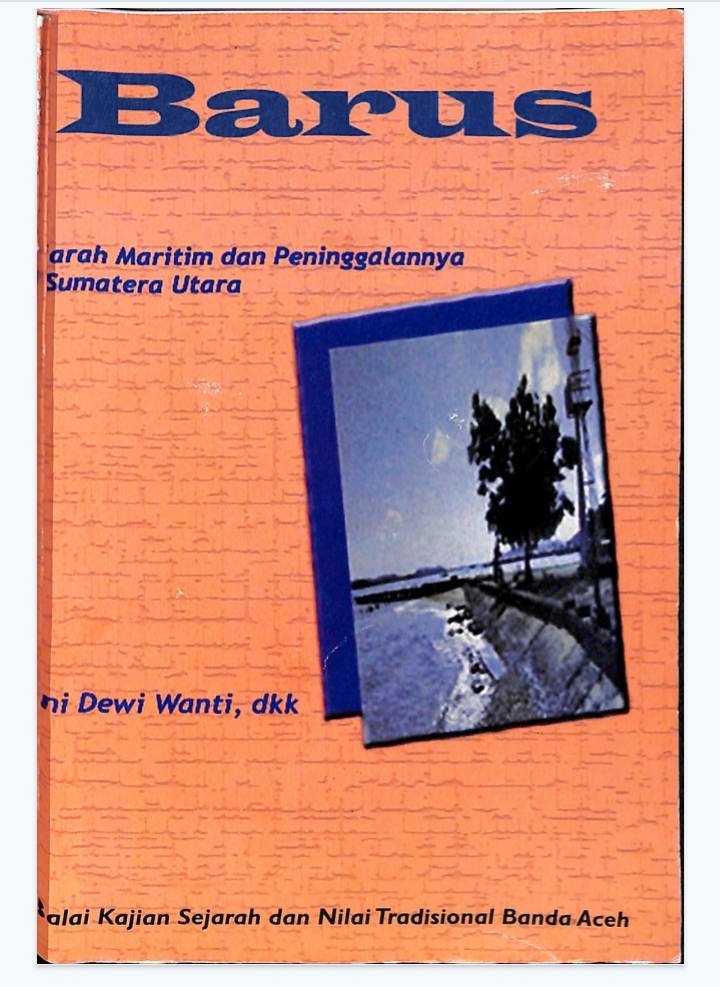Barus, a small town on the west coast of North Sumatra, holds a long history little known to the wider public. For centuries, Barus served as an important port where traders from various countries docked their ships. It stood as a silent witness to the bustling maritime trade in the Indonesian archipelago.
Historians record that Barus was known as Fansur among Arab traders, a name referring to a large natural fountain in the area. The name Fansur appeared in various ancient manuscripts from Arabia, India, and China.
In the book Arab and the Eastern Trade by Say Morley, it is mentioned that many Arab merchants traveled from India to China and would stay in Sumatra for long periods while waiting for the wind to change. Their sailing routes included stops at Morsala, Barus, Aceh, Malay, Borneo (Kalimantan), and eventually Canton, China.
Barus was not only a transit point but also a gateway for the spread of Islam in the region. In 851 AD, three Arab travelers named Suleman, Ibnu Choord Hadhbeh, and Addi Masjqi sailed to China, stopping first at the West Coast of Sumatra.
These travelers visited several strategic locations such as Morsala Island, Barus, Lamuri, Malay, Kuching, and then to Canton. Ibnu Choord and Abdi Masqyi also recorded stops at Simeulu Island, Sitiri Lobutuo, Sawa Island, and Angkola River.
The Angkola River, located in present-day South Tapanuli, once served as a vital trade route. It provided Arab merchants with a waterway to reach Sumatra’s inland regions, transporting valuable commodities such as camphor, spices, and forest products to the port of Barus.
Thomas Arnold, in his book Preaching of Islam, noted that by 684 AD, settlements of Arab merchants existed along the West Coast of Tapanuli. These traders not only engaged in commerce but also spread Islamic teachings in the region.
Arab settlements in Barus stood as solid evidence of the town being among the earliest centers of Islamic civilization in the Indonesian archipelago. According to the records of It Sing, a Chinese traveler, Arabs had already settled along the western coast of Sumatra by 671 AD.
It Sing also reported the existence of bustling marketplaces in Barus, where Arab, Chinese, and local traders conducted business year-round. These trading activities formed the economic heartbeat of the West Sumatran coast.
The significant influence of Islam brought by Arab travelers greatly shaped the culture of the local people. Even today, traditions of starting prayers with Bismillah and Allahu remain in practice among communities in Barus and surrounding regions.
This Islamic influence also reached the Karo highlands, where followers of traditional beliefs continue to use ancient Islamic prayers in their rituals and ceremonies.
Arab trade in Barus is well-documented in both ancient Arab and Chinese manuscripts. The merchants brought not only goods but also culture, technology, and religious teachings to the places they visited.
The Angkola River’s role as a trade route in the past highlights the strategic significance of South Tapanuli. The river connected Sumatra’s inland territories to its western coast, facilitating the movement of goods and people.
Natural resources such as resin, camphor, rattan, and spices were transported from the interior via the Angkola River to the Barus port. From there, these commodities were shipped to India, Arabia, and China.
At the time, the Angkola River served as an economic lifeline for communities in South Tapanuli. Numerous small river ports dotted its banks, acting as trade hubs and stopover points for foreign merchants.
The story of Barus and the Angkola River as international trade routes proves that North Sumatra has long been an integral part of global trade networks. This significance remains preserved in historical records.
Today, numerous Islamic historical relics can still be found in Barus, including ancient tombs, old mosques, remnants of ports, and former Arab settlements.
This rich historical legacy holds valuable potential for North Sumatra to develop heritage and cultural tourism. Barus and the Angkola River continue to stand as enduring witnesses to a glorious past.

